Fars Province ''Shiraz'' Geographical Position
The Fars Province with an area of 122,400 sq. km. is located to the south of Esfahan Province and near the Persian Gulf, has played such a major role in the country's ancient history that it is considered the center of Iranian identity. It is this province that gave its name to the Persian language spoken today, Farsi. In the first millennium BC, when the Persian lndo-European tribes arrived in Iran after a long migration from the Caucasus they settled in the Bakhtiari Mountains, to the northeast of present-day Fars, in a region then known as Parsumash. King Teispes (675-640 BC)
Shiraz Briefly
To an Iranian, the very mention of the name of Shiraz will evoke an elegy to a unique sophistication, an art of living present nowhere else in the world, the product of an ancient and learned civilization. Shiraz is an opulent oasis of greenery and culture in an otherwise barren landscape; it is the town of roses, of nightingales, of love and, at one time, of wine. But above all, Shiraz is the town of the poetry of Saadi and of Hafez. The first capital of Fars, some 2500 years ago, was Pasargadae (is located near to Shiraz). It was also the capital of Achaemenid King Cyrus the Great. The ceremonial capital of his successor, Darius, and his son Xerxes the Great was Persepolis. Today, only the ruins of these two capitals remain. Estakhr was another capital of Fars. It was established by the Sassanians and lasted until Shiraz finally assumed the role of the regional capital
.jpg)
Shiraz during various ages subsequent to Islam
Shiraz has passed through a variety of experiences in the course of the fourteen centuries that have elapsed since the coming of Islam. There were six periods, during which Shiraz was ruled by local princes, and by learned and influential kings, when she flourished and grew in size and importance, nourishing men of note and culture, whose fame is world-wide. Bearing in mind the scope of this book, we give a brief description of these significant periods in her history
Pasargadae
Pasargadae was the first dynastic capital of the Achaemenid Empire, founded by Cyrus II the Great, in Pars, the homeland of the Persians, in the 6th century BC. Its palaces, gardens and the mausoleum of Cyrus are outstanding examples of the first phase of royal Achaemenid art and architecture and exceptional testimonies of Persian civilization. Particularly noteworthy vestiges in the 160-ha site include the Mausoleum of Cyrus II; Tall-e Takht, a fortified terrace; and a royal ensemble of gatehouse, audience hall, residential palace and gardens. Pasargadae was the capital of the first great multicultural empire in Western Asia. Spanning the Eastern Mediterranean and Egypt to the Hindus River, it is considered to be the first empire that respected the cultural diversity of its different peoples. This was reflected in Achaemenid architecture, a synthetic representation of different. The Pasargadae was designated a UNESCO WORLD HERITAGE SITE

Persepolis
Persepolis, Old Persian Parsa, an ancient capital of the kings of the Achaemenian dynasty of Iran (Persia), located about 30 miles (50 km) northeast of Shiraz in the Fars region of southwestern Iran. In 1979 the Persepolis was designated a UNESCO WORLD HERITAGE SITE. Though archaeologists have discovered evidence of prehistoric settlement, inscriptions indicate that construction of the Persepolis began under Darius I, who, as a member of a new branch of the royal house made Persepolis the capital of Persia proper, replacing Pasargadae, the burial place of Cyrus II (the Great). Built in a remote and mountainous region, Persepolis was an inconvenient royal residence, visited mainly in the spring. The effective administration of the Achaemenian realms were carried on from the imperial cities of Susa, Babylon, and Ecbatana. This accounts for the Greeks being unacquainted with Persepolis until Alexander the Great’s invasion of Asia. In 330 BCE, during the reign of Darius III, Alexander plundered the city and burned the palace of Xerxes, whose brutal campaign to invade Greece more than a century before had led, eventually, to Alexander’s conquest of the Persian empire. In 316 BCE Persepolis was still the capital of Persis as a province of the Macedonian empire. The city gradually declined under the Seleucid kingdom and after, its ruins attesting its ancient glory
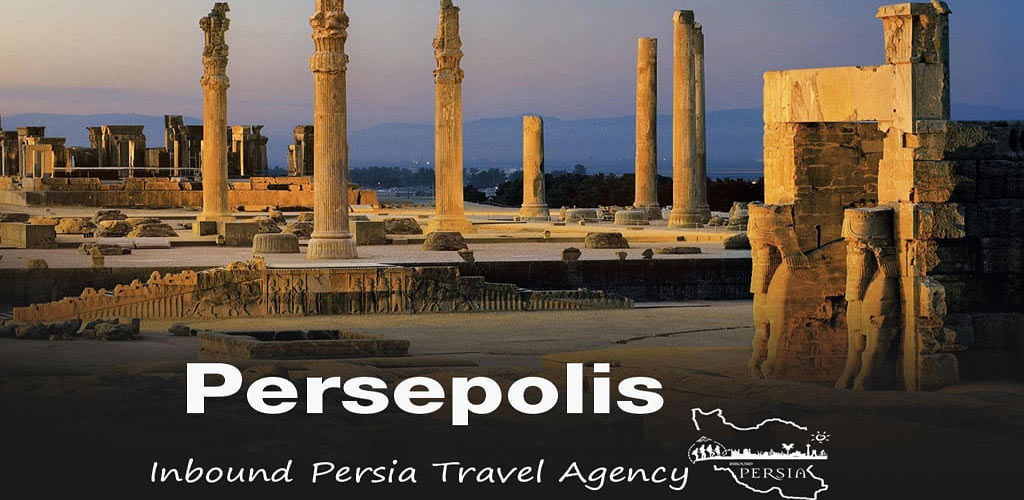
Naghsh- e Rostam (Necropolis)
Naqsh-e Rustam is one of the most spectacular and awe-inspiring ancient sites of the Achaemenid Empire, consisting of the colossal tombs of Persian kings dating back to the first millennium BC. It stands as a lasting memory of a once powerful empire that ruled over a significant portion of the ancient world. Naqsh-e Rustam is located approximately 5 km (3 miles) to the northwest of Persepolis, the capital of the former Achaemenid (Persian) Empire in the present day in Iran. Engraved on the facade of a mountain range considered sacred in the Elamite periods are the rock-cut tombs of Achaemenid rulers and their families dating to the 4 th and 5 th centuries BC, as well as richly decorated reliefs carved by the Sasanians in the 3 rd century AD. In addition to being a royal necropolis, Naqsh-e Rustam became a major ceremonial center for the Sasanians until the 7 th century AD. The Naqsh-e Rustam site was already in use prior to the arrival of the Achaemenids, as evidenced in one pre-Achaemenid (possibly Elamite) relief and a number of old graves. Although this relief has been carved over by a Sasanian relief, a portrait of a man with a forward pointing hat and a long dress-like garment (clothing not typical of the Achaemenids and Sasanians) can still be discerned on the extreme right of the later relief. According to some sources, it was this figure that locals associated with the mythical hero of the Shahnameh (Kings Letter )writings in the “book of the kings”, named Rustam, hence the name of the site. Most of the reliefs, however, date to the beginning of the Sasanian period. In the 3 rd century AD, the Sasanians, a vassal of the Parthian Empire that succeeded in overthrowing its master, were a new power that rose in the East. In order to legitimize their rule, the Sasanians sought to associate themselves with the Achaemenid (Persian) Empire and regarded themselves as to its direct successors. One of the things they did to achieve this goal was to carve reliefs at Naqsh-e Rustam

Naghshe Rajab
Naghsh-e Rajab is one of the most beautiful ancient rock carvings in Iran which is within reach of Persepolis 3kms away in Shiraz. Once you are there, you will see the massive carvings to the right of the Royal road ( Shahi Road), the main road built here 25 centuries ago to connect Susa in Persia to Sardis in Lydia. Naghsh-e Rajab has been carved in the northern slope of Mount Rahmat and depicts historical scenes from the coronation of Ardeshir I (224-239 BCE), the figure of Shapur I and his coronation (239-270 BCE), and Kartir, the Magi of all magis in the Sassanid Dynasty. Many carvings have remained here from the Sassanid Period. As the Sassanid (Second Persian Empire) were from the Achaemenid (First Persian Empire) bloodline, the stone carvings from their time are also concentrated in Pars Province in proximity to Persepolis. Ardeshir I established the Sassanid Dynasty and Empire and the carving of his coronation is one of the oldest carvings in Naghsh-e Rajab of Fars. This depicts Ardeshir I holding the crown of power in his right hand, which he has received from Ahura Mazda (the Supreme being in Zoroastrianism), while he is wearing a majestic crown on his head and pointing his index finger to the sky as a sign of respect. In the second carving, Shapur I is seen on his horse at his coronation ceremony. This is a masterpiece from the Sassanid Period and an amazing harmony and balance can be seen in the work. Sitting on his horse, Shapur takes the crown of power from Ahura Mazda while he is holding the sword in his left hand. The details of his face and hand have faded with the passage of time. The third carving also depicts Shapur I on his horse followed by nine 0of his courtiers. Last but not least, the fourth carving shows the Magi of all magis, Kartir, one of the most influential religious figures of the Sassanid Period under Shapur I, Bahram I, and Bahram II. He is holding his index finger upward as a sign of respect for the congregation of the Empire which is depicted separately on a carving behind him
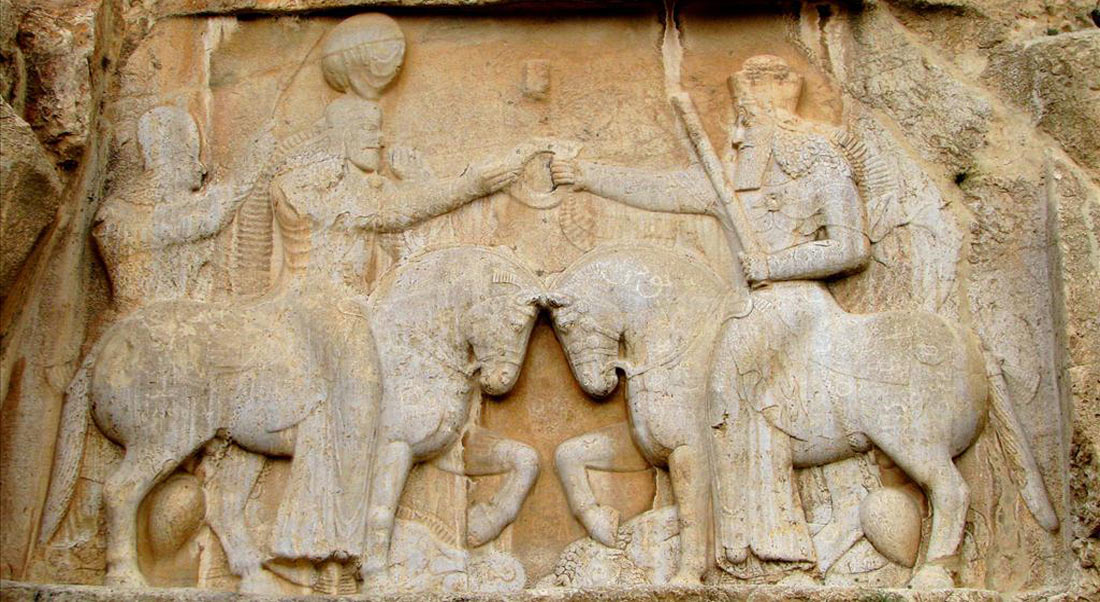
Ardeshir Babakan Palace
Ardeshir Babakan Palace, also known as the Atash-kadeh (Fire Temple ), is a castle located on the slopes of the mountain on which Ghaleh Dokhtar is situated on and it's one of the Sassanid archaeological landscape of fars region that registerd in UNESCO WORLD HERITAGE SITE in 2018.This palace Built in AD 224 by Ardashir I of the Sassanian Empire, it is located two kilometers (1.2 miles) north of the ancient city of Gor, i.e. the old city of Firouzabad in Fars. The structure contains three domes, among other features, making it a bit larger and more magnificent than its predecessor the nearby castle of Ghaleh Dokhtar. However, it seems that the compound was designed to display the royalty image of Ardashir I, rather than being a fortified structure for defense purposes. That is why perhaps it would be best to refer to the structure as a "palace" rather than a "castle", even though it has huge walls on the perimeters (twice as thick as Ghaleh Dokhtar), and is a contained structure. From the architectural design, it seems the palace was more of a place of social gathering where guests would be introduced to the imperial throne
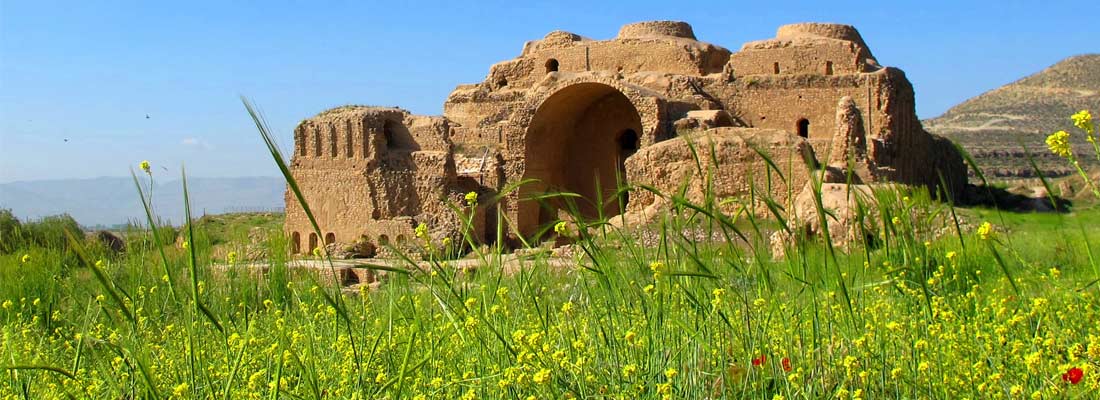
Ancient Bishapour City
Between two ancient cities of Persepolis and Susa, linking two Sassanid (224-642 AD) capitals of Estakhr and Ctesiphon, founded or better saying rebuilt on an older city, Bishapur became a dazzling jewel of its era. The city is named after Shapur I (241-272 AD) as Bishapur by the size of 2.1 kilometers. The city has a square plan with two main streets crossing each other, and reaching the main gates, unlike other Iranian cities that have a circular plan. There are different assumptions about how the city was built; like being built by the captivated Roman soldiers or by Roman and Iranian architects and artists, but they are all based on the same facts. The city has a structure quite like the Roman cities of that time with the same micro mosaic decorations in the royal palace. Though it is popularly believed that King Shapur ordered building the city after his great victory over the Roam Emperor, Valerian, and captivating him along with his legion. As a result, it can be dated back to 260 AD. There is also an inscription over two 9 meter high columns in the city which shows year 24 after the reign of Shapur, so 264 or 266 AD as Shapur was assigned as King before his father’s death in 242. Bishapur is one of Iran’s ancient cities, located in Kazerun of Fars province. Bishapur is a treasury of precious Sassanid relics such as Anahita temple. The architecture style of this place was the Parthian style. Bishapur historical city was registered on September 16th, 1931 in the list of Iran’s national heritage with the registration number of 24. Bishapur recorded in UNESCO WORLD HERITAGE SITE in 2018 as one of the Sassanid Archaeological Landscape of Fars Region.

SHIRAZ GARDENS
Shiraz known as the city of flowers and birds in Iran is the most pleasant in April and May. With its many orange gardens, you can almost smell the scent of spring everywhere in the city. Shiraz has so many beautiful gardens, Eram Garden, Naranjestan Garden, Afif Abad Garden, Jahan Nama Garden, and Delgosha Garden are just some of them. The particular tree which is planted in these gardens are orange trees and their blooming season is March and April. Shiraz gardens are ornate in different manners with these aromatic trees. In below we are going to introduce some of these gardens where you can visit during your trip to Iran
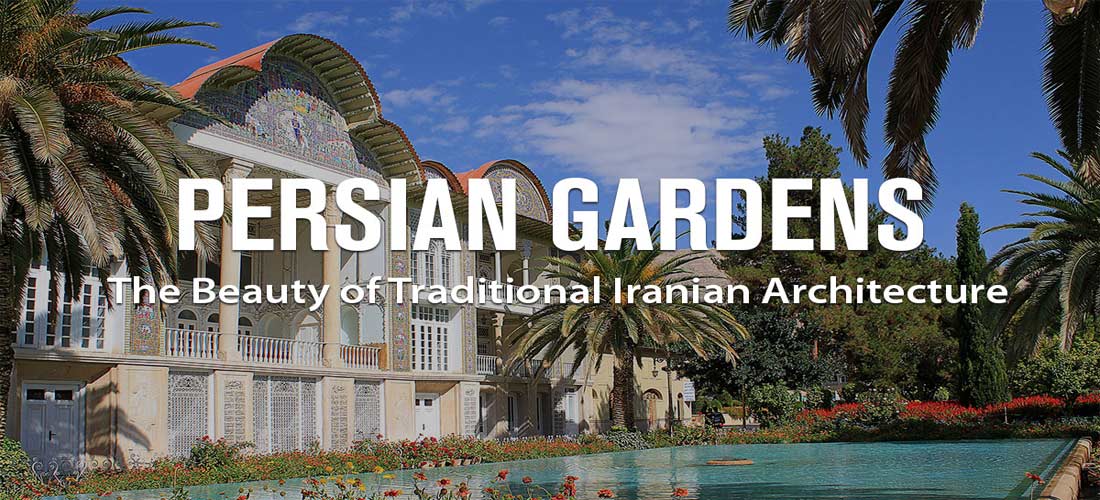
Shapouri Garden
The historical house of Shapouri belongs to the early Pahlavid reign in Persia (Iran).The shapouri House was built between 1930 and 1935. This nice house is located in city Centre (Anvari Street) of Shiraz. It has 840 square meters of underpinning and 4635 square meters of garden area and 2 stairs. Shapouri mansion was designed by Abolghasem Mohandesi, the well-known architecture of Shiraz, the owner was Abdolsaheb Shapuori one of the great merchants of Shiraz. This building is unique and very innovative. Shapouri House and Garden are precious examples of their time and represent the innovation and creativity of plans, facades and structures. The innovations applied on the structure of this garden have turned it into an Iranian-European garden. Some of the invaluable features of Shapouri House are the western (major) facade decorations, circular and designed gaseous columns, tiling’s with Archaemenids designs on the upper porch. This mansion was Registered as a National Building in 2000 with registration number 2781.
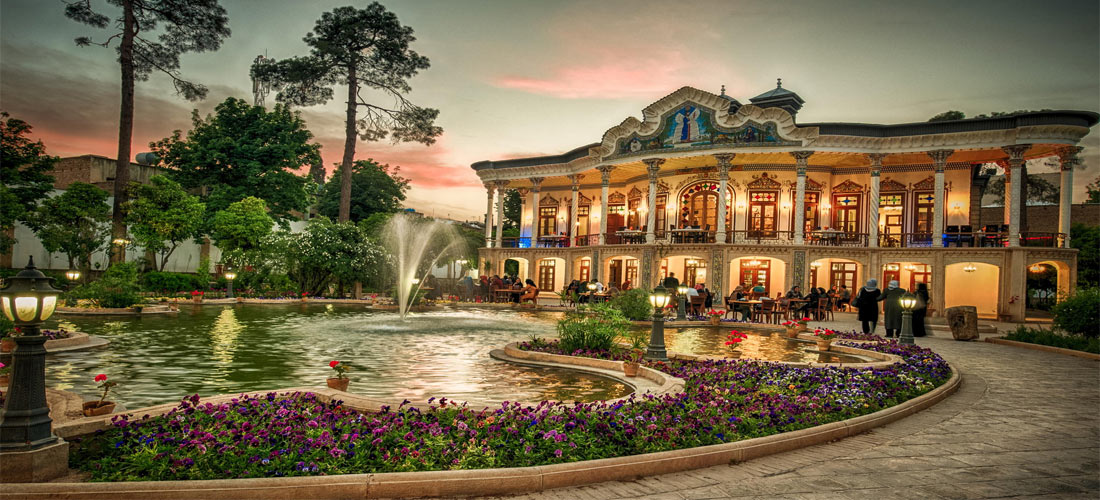
Delgosha Garden
The history of this garden dates back to Sassanid period and is located near Saadi tomb. Almost all of the trees of the garden are citrus specially orange gardens which makes Delgosha garden extremely delightful during the blooming season of orange trees. The garden also has a beautiful pavilion in the center of it
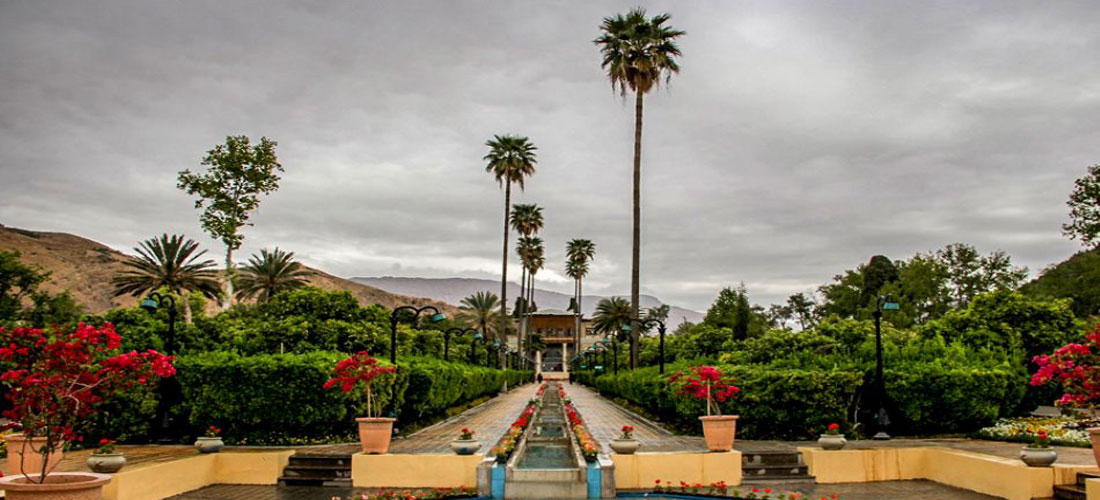
Eram Garden
Eram Garden (Garden of Heaven) is an acclaimed notable Persian garden in Shiraz, Iran. It is a substantial garden with a superb looking royal residence in it. The untainted Eram Garden is a hitting area for guests with an assortment of plants and also a notable manor. In spite of the fact that the correct date of the development of the garden is not clear, chronicled confirm proposes it was built amid the Seljuk Tradition on the requests of the observed Seljuk ruler Sanjar the same number of different patio nurseries were planted amid his rule. In the same way as other memorable landmarks in the southern city of Shiraz, it was reestablished and repaired by the Zand rulers. It is such a uique and gorgeous garden that is inscribed on UNESCO WORLD HERITAGE SITE. In the holy book of Quran, Eram is described as the Paradise for the blessed ones. It has a great atmosphere surrounded by tall cypress trees,fragrant flowers, and aromatic sour oranges trees.
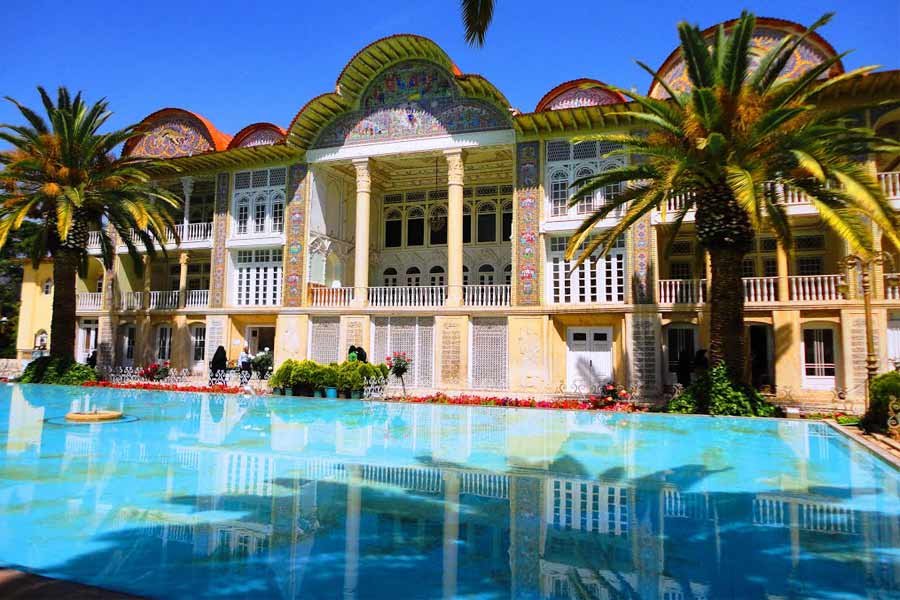
Naranjestan Garden
A beautiful garden and building complex from the Qajar period named after the oranges that line the central pathway. A typical – but rather small – Persian garden, the pavilion at the back is the main reason to visit with its beautiful stained-glass windows, mosaic patterns and risky European works of art. Best visited in full light, you will find it empty during most of the day and the palm-trees shade is perfect for sitting and reading or talking under
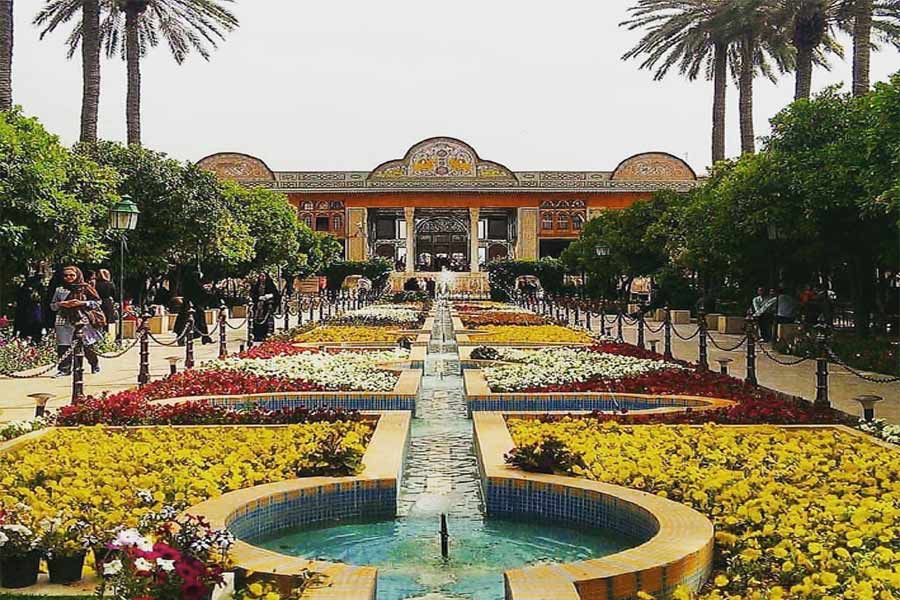
Zinat Al Mulk House
Zinat ol-Molk House, the magnificent Qajar mansion, is one of the attractions of Shiraz, Iran. The mansion once belonged to Qavam ol-Molk family, ruled over Shiraz for years; The house was named after the daughter of the owner, Zinat ol-Molk. This fabulous house is considered as the only house in Shiraz with a brick basement beneath its total surface. The construction was started in 1290 AH and finished by 1302 AH by Ali Mohammad Khan Ghavam ol-Molk. This famous and spectacular building is located at Lotf Ali Khan Zand Street, next to Narenjestan Garden; indeed, it is connected to it by an underground way
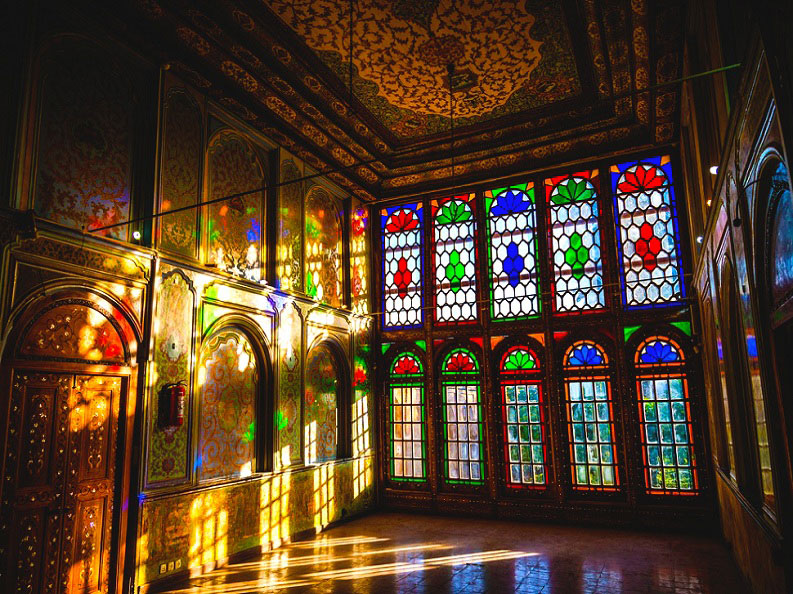
Nasir Al Mulk Mosque or Pink Mosque
Nasir-Al-Molk Mosque also called “Mosque of colors,” the “Rainbow Mosque” and most notably the “Pink Mosque”, was constructed along with a bathhouse, a school, and a cistern. Construction of this Qajar complex took about ten years (1876-1887) and was carried out by Haj Mohammad Hassan, with the command of Mirza Hasan Ali Nasir al-Molk, the third son of Qavam al Molk. The latter was the ruler of Fars and enjoyed the trust of the Qajar court. Although the mosque was constructed in the Qajar period (1785 to 1925), it follows some of the architectural forms of the Zand era (1751-1794). Its main entrance is located on the west of the northern side of the complex. It is a rectangular portal with a large wooden door in the middle of an arch and stands in an asymmetrical relation to the building. A poem by Shurideh Shirazi, a 19th-century poet from Shiraz, is written on the marble stone installed over the door. On the front wall of the vestibule upon entrance, there is a two-line poem by Saadi inscribed over the names of the mosque’s architects and the date of its construction. The vaulted vestibule following the portal leads visitors to a rectangular courtyard. In the middle of the courtyard, there is a rectangular pool aligned with the north-south direction. Two porches rise on either end of the pool, and two prayer halls stretch along its sides. Tholth inscriptions on marble stone can be traced all around the courtyard walls and dados. Unlike the typical architectural tradition of the Iranian mosques in which the southern side of the mosque is more elaborate because of pointing to qibla, the northern porch is more lavishly decorated. Probably the most famous Mosque in Iran – and certainly the most photographed, the Pink Mosque of Shiraz is reason alone to visit Shiraz and does not disappoint. Best viewed just after opening when the rainbow shadow stretches all the way across the room – though be prepared to fight the crowds for the perfect photo. While the kaleidoscope of color at the Pink Mosque is the main feature, there is also plenty of other beautiful rooms and details to take in, including a newly added underground storage tunnel that has been renovated and opened. The Pink Mosque of Shiraz is one-thing you cannot miss the chance to see in person

Hafez Tomb
To the old Master, eternally I am bound,
Have always been, will still be, on this merry-go-round,
When you pass by my tomb, ask for grace,
It’s a shrine where the drunkards abound.
There is no way for a Persian to hear Shiraz’s name and doesn’t immediately think about Hafiz. To Persians, he is nothing less than a prophet. The prophet of love, art, and beauty inside. Hafiz is an inseparable item of any Persian celebration and ceremony such as Nowrouz and Yalda Night. He is one of the poetry geniuses from all times, whom Goethe, the great German poet, wished to be one of his disciples. The chances of not finding a Hafiz book in any Persian house are zero. Hafiz Shirazi is beloved among Iranians, and anyone, from children to elderly enjoy reading his smart, beautiful and involved poems. Every year, on 22nd October, people show their respect to him on national Hafez day by his tomb, Hafezieh. In 1452, 65 years after Hafez’s death, a small, dome-like structure with a large pool in front of it was built near his grave at Golgasht-e Mosalla by the order of Babur Ibn-Baysunkur, a Timurid governor of Shiraz. At that time, this place was one of Shiraz cemeteries and Goldasht-e Mosalla Garden is mentioned several times in Hafiz poems. The original land that the tomb of Hafez is in it was more than two hectares wide. After that, in the Safavid and Afsharian eras, this tomb was renovated two times; once on the order of King Shah Abbas, and years later, on the order of Nadershah Afshar. Karim Khan Zand, the righteous governor of Shiraz, built a new metal shrine with this hafiz Ghazal (or sonnet) engraved on it in calligraphy
In the hope of union, my very life, I’ll give up
As a bird of Paradise, this worldly trap I will hop
Iranians have a saying that every home must have two things: first the Quran,then Hafez. Hafez is an influential Iranian poet. Almost every Iranian can quote his work,bending it to whichever social or personal persuasion they subscribe to. And there is no better place to try to understand Hafez’s eternal hold on Iran than at Aramgah-e Hafez,his tomb. Set at the back of the ground of Hafez’s tomb is a teahouse which is a great place to chill out with some live traditional music and a cup of tea

Saadi Tomb
Saadi had a great influence on so many people to reach higher levels of humanity. Saadi lived in the 13th century, but the rich depth of his poets with moral and social values has been touching so many hearts all centuries. Undoubtedly, he is one of the masters of Persian literature. Due to his knowledge, he was called “Sheikh''.Karim khan Zand, the 18th-century ruler of Shiraz ordered to build this tomb for him to honor Saadi. From the outside, it looks like a square structure. The flat facade is decorated with tiles depicting tree of life in various colors. Under the order of Reza Shah –the founder of Pahlavi dynasty- they restored the mausoleum. Saadi is a famous Iranian poet whose poetry has been touching so many hearts all over the world. He had a great influence on so many people to reach higher levels of humanity. Saadi lived in the 13th century, but the rich depth of his poets with moral and social values has been touching so many hearts all centuries. People quote so many of his poets in their usual life and use them as proverbs. Undoubtedly he is one of the masters of Persian literature. Saadi was a man of learning. He left his birthplace to Baghdad to study at Nezamiah University – the center of knowledge in the Islamic World. He was excellent in Arabic literature, Islamic sciences, history, governance, law, and Islamic theology. Due to his knowledge, he was called Sheikh. Tomb of Saadi is one of the tourist attractions of Shiraz city. Saadi is one of the great Iranian poets who has many lovers. The mausoleum of this great poet, like other poets of Shiraz city, is a very beautiful example of unique Persian gardens. The grave is inside an octagonal edifice on top of which stands an amazing azure blue dome and inside the mausoleum all around the walls are inscribed with verses of Saadi’s poems. Inside the mausoleum yard and in front of the entrance of the tomb lies a beautiful pond. People throw coins into the pond so that their wishes would come true. Saadi Tomb is farther from other main attractions of the city of Shiraz and you had better go there by car. Inside the gorgeous atmosphere of the garden, you can listen to traditional Persian music which is played in the garden and enjoy the relaxing environment of this monument. Across from the entrance of this garden, stands a traditional ice cream shopping stall which is very popular. Please do taste the ice cream and Faloudeh Shirazi (of Shiraz). There is a poem from Saadi that is famous and popular all over the world

Human beings are members of a whole, In the creation of one essence and soul
If one member is afflicted with pain, Other members uneasy will remain
If you’ve no sympathy for human pain, the name of human you cannot retain
Khajoo Kermani Tomb
Khajoo Kermani was a well-known 14th-century poet from the city of Kerman (located in the south of Fars Province), who left his hometown to travel to cities of the Islamic world and finally settled in Shiraz. It is said that he kept them company of many notable figures in Shiraz such as Hafez and Ubayd Zakani. Located on the slope of Sabuy hill in the north of Shiraz, the tomb was built by the General Bureau of Archeology before the Islamic revolution and underwent renovation after it. Its structure overlooks the Quran Gate and is reached by a stone stairway. On the first level, there is a white stone structure like an open veranda (ayvan) fronted by a corbelled arch and three pillars in the middle. A statue of Khajoo Kermani carved out of stone and a wall inscription of his poems are the other features of this veranda. The stairway on the upper level leads visitors to an unroofed space laid out around the grave of the poet. The round gravestone, enclosed by a glass box, has no inscription and lacks information concerning the owner of the grave. It only bears a verse from Quran: “All that is on earth will perish: But will abide (forever) the Face of thy Lord, - full of Majesty, Bounty, and Honor”. Two short pillars situated below and above the gravestone are the other notable characteristics of the tomb, representing a custom practiced in the construction of the tombs of mystics and poets
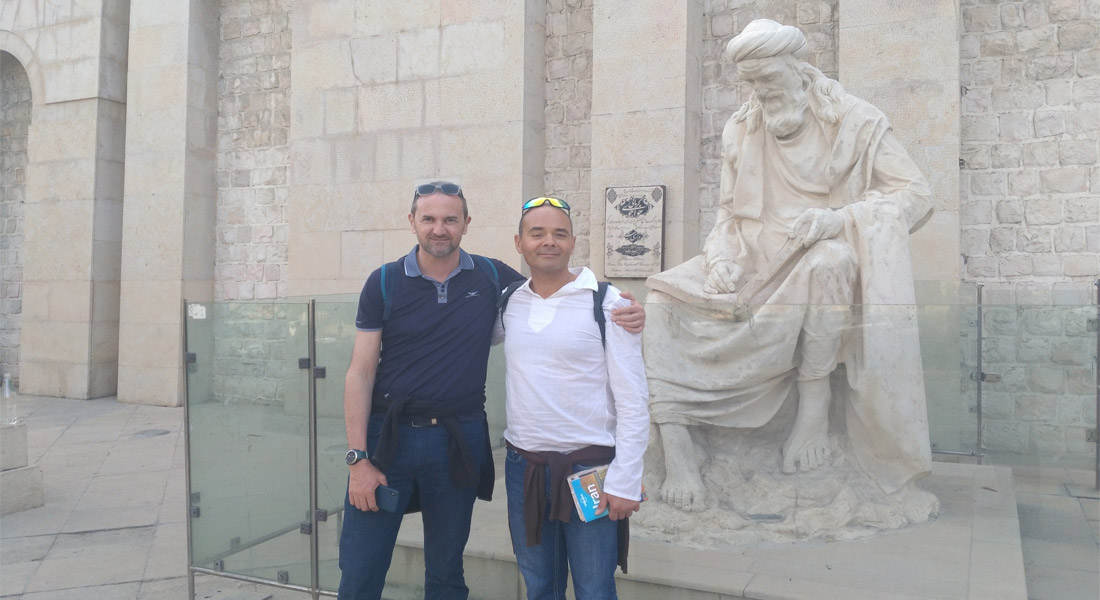
Quran Gate
Quran Gate is a historic gate in the north of Shiraz, Iran.The Gate was first built during the reign of Adud ad-Dawla. By the time of the Zand dynasty, it had sustained a lot of damage, so it was restored and a small room on top was added, in which were kept hand-written Quran by Sultan Ibrahim Bin Shahrukh Gurekani. The two Qurans are known as Hifdah-Man. Travelers passing underneath the gates were believed to receive the blessing of the Holy Book as they began their trip or journey from Shiraz.During the Qajar dynasty, the gate was damaged by multiple earthquakes; it was later restored by Mohammad Zaki Khan Nouri. In 1937 the two Qurans were taken from the gate and were taken to the Pars Museum in Shiraz, where they remain today. In 1949 the arch of the gate was restored by Hossein Igar. Quran gate is a historical monument in Shiraz. The name is chosen , cause the Quran book ( Muslims Holy Book) on top of the gate. In Iranian culture, walking behind Qur'an, when you are going to go to travel , cause bring auspicious moments through the journey. Thus, they had installed the holy book to cause lucky things. The beside of this gate is a highway to Isfahan and Tehran cities, nowadays; but there were Allahu Akbar valley about 50 years ago. Kkajoo Kermani tomb is on top of this site and let's take a look, it has fantastic scene, also
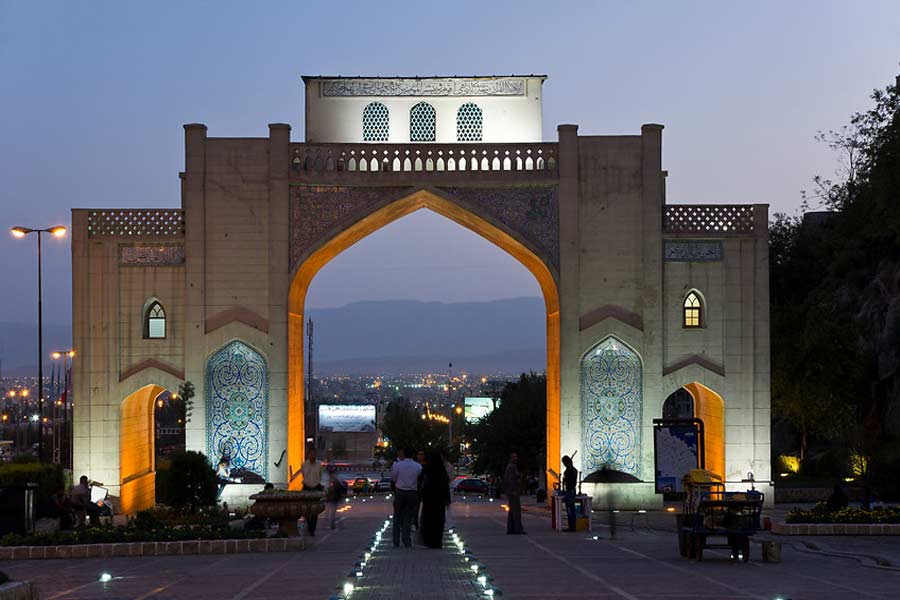
Atiq Jameh Mosque
Atiq Jameh Mosque is the oldest mosque of Shiraz. It is located in the east of Shah Cheragh Shrine. Atiq Jame Mosque of Shiraz has been renovated several times. Nodbeh Wall and Khodaye Khane are some of the attractions of this mosque. It is believed that on the night of Miraj, Boragh (an Iranian-made armored personnel carrier) passed from Nodbeh Wall. Additionally, the dome of the north Iwan and the hypostyle columns are so attracting. Atiq Jameh Mosque is the oldest and first mosque of Shiraz. It is a strange mosque. Atiq Jame Mosque was built in the pre-Islamic era. This mosque represents Shiraz oldest Islamic Structure though most parts of it belong to the Safavid Era. It is right across Nasir-Ol-Molk Mosque (known also as Pink Mosque). Zinat Al-Moluk House, Vakil Bazaar, and Vakil Bath are also close and are located on Lotf Ali Khan Zand Street. It has been renovated several times, such as Salghuri (in the reign of Ibrahim Mirza) and Safavid Era. It was registered on January 6th, 1932 in the list of national relics with the registration number of 72
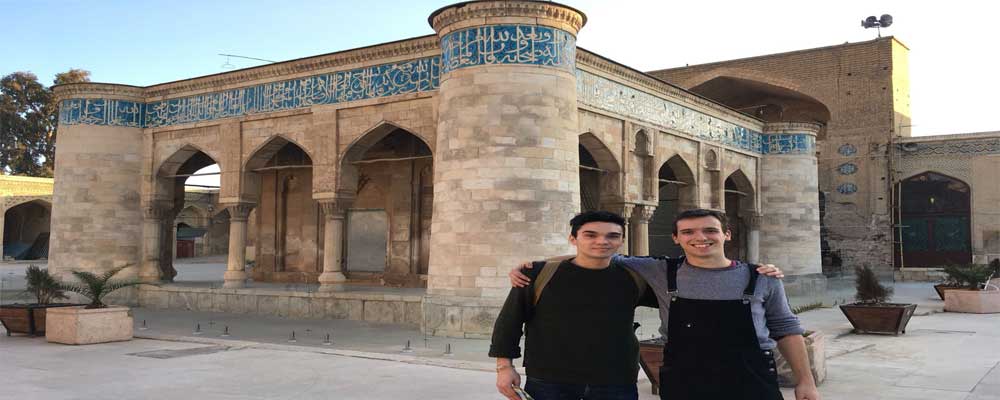
ZANDIYEH COMPLEX
One of the most attractive monuments of Shiraz is Zand Complex which consists of Arg-e Karim Khan ( Karim khan Castle) , Vakil Mosque, Vakil Bathhouse, Vakil Bazaar, Water Reservoir and Nazar Garden. The complex is really beautiful and attractive and you can see a complete complex comprised of a bazaar full of stores, a bath house for getting clean, an amazing mosque for saying prayers, a castle as the residential place of the king of Iran, a garden and a museum for receiving the foreign dignitaries and finally a water reservoir
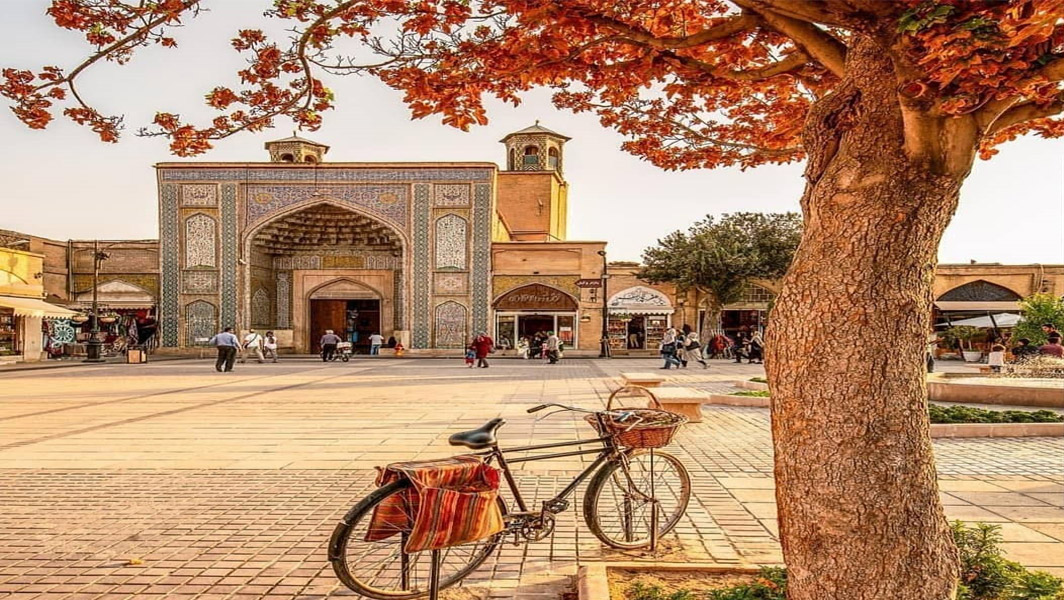
Vakil Bazaar
Shiraz’s ancient trading district is comprised of several bazaars dating from different periods. The finest and most famous is the Vakil Bazaar (Bazar-e Vakil ),a cruciform structure commissioned by Karim Khan as part of his plan to make Shiraz into a great trading centre. The wide vaulted brick avenues are masterpieces of Zand architecture, with the design ensuring the interior remains cool in summer and warm in winter. Today, it’s home to almost 200 stores selling carpets, handicrafts, spices and clothes and is one of the most atmospheric bazaars in Iran, especially in the early evening when it is fantastically photogenic. As usual, it’s best explored by wandering without concern for time or direction, soaking up the atmosphere in the maze of lanes leading off the main thoroughfares
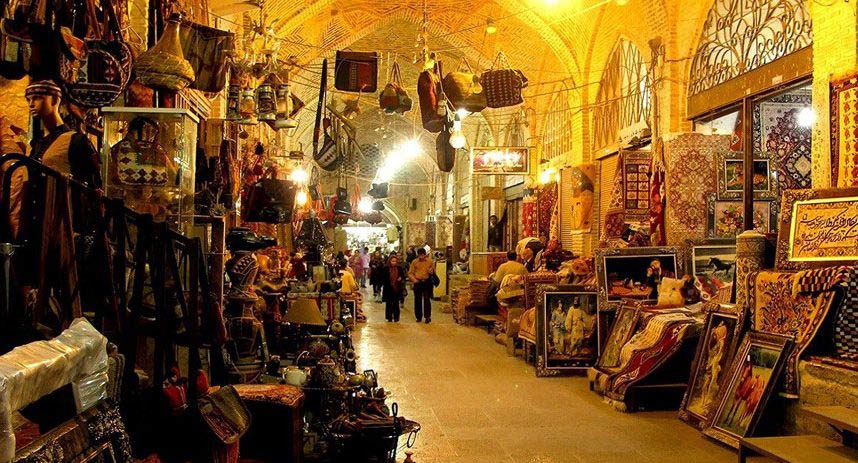
Vakil Mosque
The beautiful Vakil Mosque was begun by Karim Khan and is the only major mosque surviving from the late Zand period. Beside the entrance to the bazaar, it has two vast iwans to the north and south , a magnificent inner courtyard surrounded by beautifully tiled alcoves and porches ,and a pleasingly proportioned 75m-by-36m vaulted prayer hall supported by 48 carved columns. Inside the prayer hall are an impressive mihrab and 14-step marble minbar, carved from a monolith carried all the way from Azerbaijan. Much of the tiling,with its predominantly floral motifs and arabesques, was added in the early Qajar era
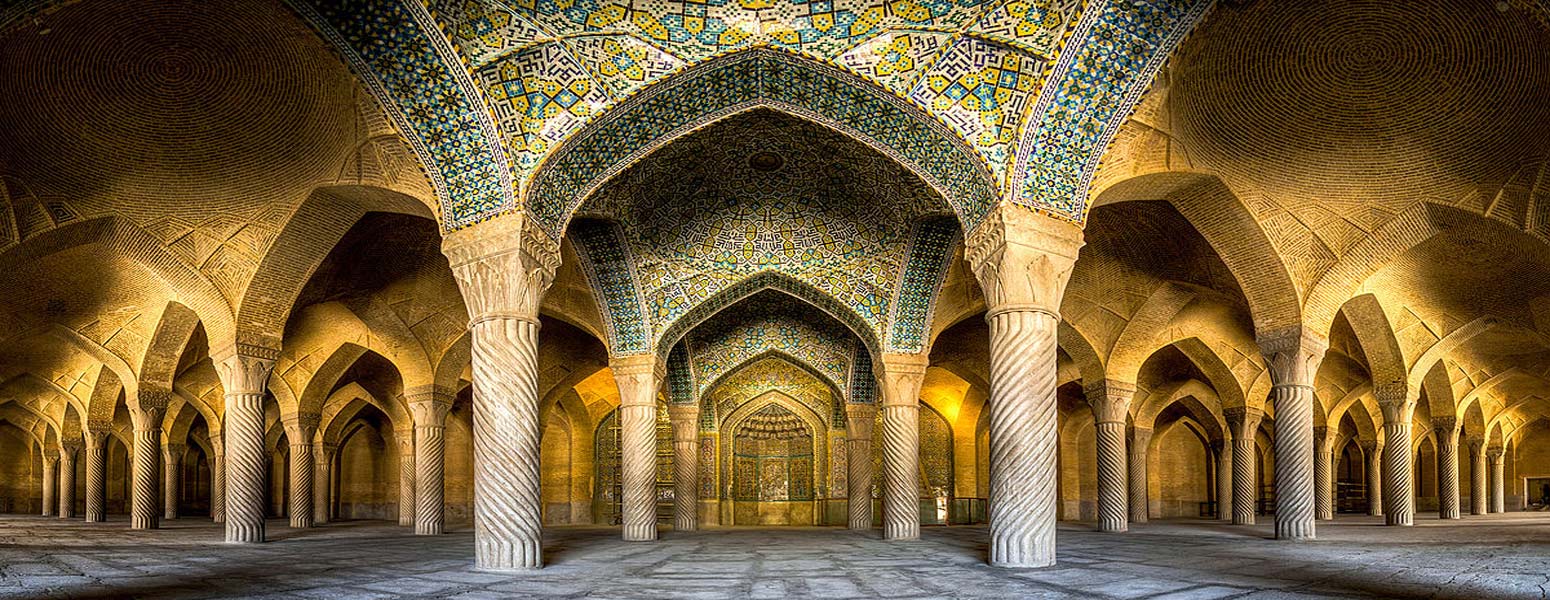
Vakil Bath
Vakil Bath is a flawless representation of architectural developments of Zand Dynasty and was built in the center of Shiraz under the direct command of Karim Khan Zand. This structure is famous for its aesthetic beauties that force its visitors to walk with their heads held high above because the ceiling is much more impressive. It is also registered on Iran National Heritage list. Shiraz had been under the constant attention of Karim Khan Zand during his reign as it was chosen to be the capital city of the time. He constructed several buildings which were later called as Vakil Complex. These buildings contain a mosque, bazaar, bath, water storage, citadel, and many more. It is said that Karim Khan Zand was eager to resuscitate the priceless history of Iran. This ancient artwork is discerned for a great dignity and magnificence which is hard to find in any other historic baths. Such a feature has transformed Vakil Bath to a notable and admirable mansion of Zand Dynasty. Today, Iran Cultural Heritage Organization has made a lot of attempts to renovate some ruined parts of Vakil Bath in order to preserve the ancient Persian culture and the Iranian identity. Archaeologists have taken the decorations and architectural details under a careful examination and they have drawn the conclusion that they are inspired by Safavid architecture. One special fact about ancient baths that should be noted here is that they were not just normal baths for cleansing the body. The other function they used to have was to be a place for particular ceremonies like baby shower, marriage proposals, and other old marriage traditions. However, these traditions are no longer held in Vakil Bath for the time being
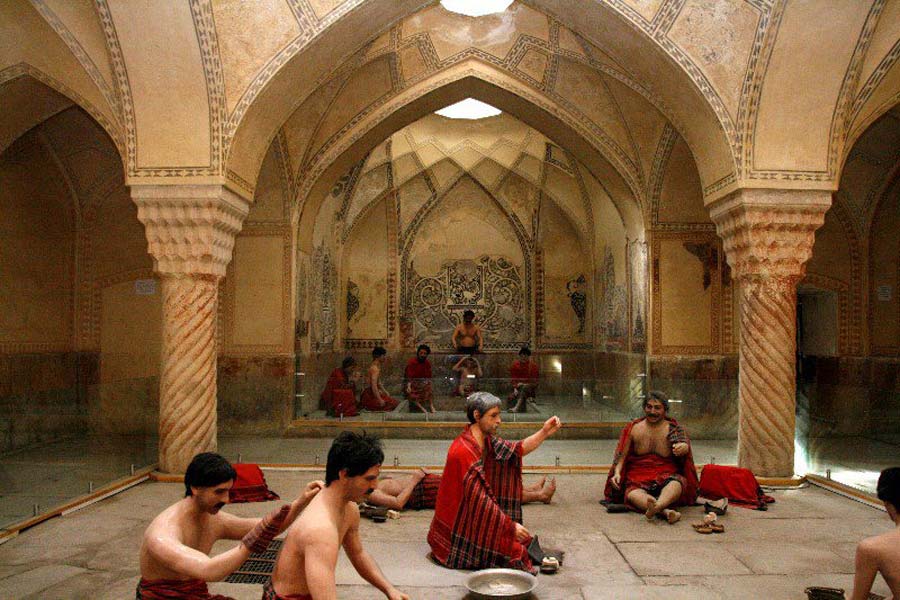
Nazar Garden or Pars Museum
It is known as Shiraz Pavilion and the oldest museum in Fars province. Pars Museum or Nazar Garden is the homage of numerous valuable items and objects from different historical eras, from pre-Islamic to post-Islamic. The building of Pars Museum was built in the middle of a garden and under the direct supervision of Karim Khan Zand, the famous governor of Shiraz. It has an irregular octagon shape in two stories with the ceiling that is more than 14-meter high. You can take a tour outside the pavilion building and see three historical objects that are in the garden. They are all stone inscriptions that date back to the Qajar era. Also, you can find trees that are labeled as ancient trees among the numerous trees that exist in this garden. One of the most important parts of this museum is the grave of Karim Khan Zand. He was one of the most righteous governors in the history of Iran. Based on his will, he was buried inside the pavilion, on the eastern side. But it is interesting to know that this grave once became empty when then Agha Mohammad Khan, one of the Qajar Kings, decided to move the bones and place it under the staircase of Golestan Palace in Tehran based on his malice toward Karim Khan
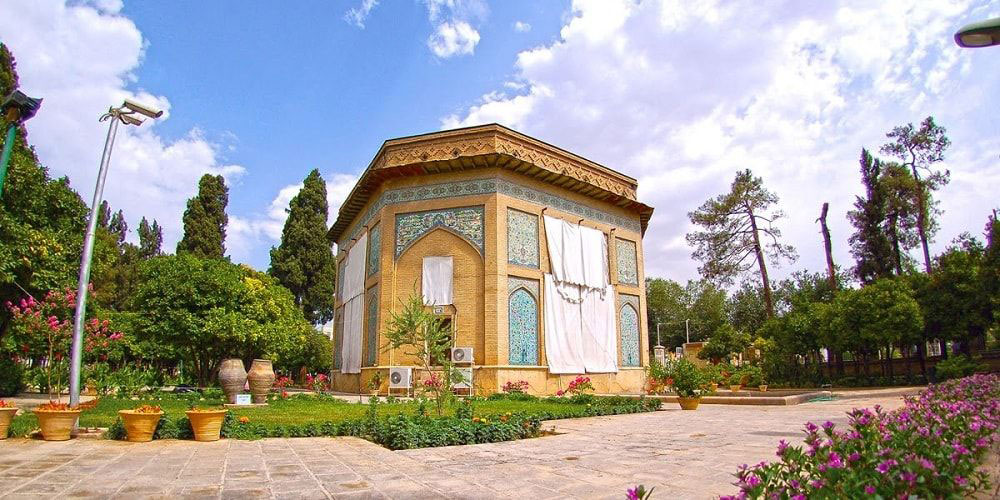
Karim Khan Castle
The citadel consists of four high walls. The lower section of the exterior walls is three meters in width. It is shaped like an incomplete cone and its width at the top reaches 2.8 meters. In the upper section of the wall, there is a small chamber, which houses soldiers and guards. Ramparts are built around the top of a castle with regular gap, some of which are small and diagonal for firing arrows or guns. The bigger gaps were for repelling the enemy. The palace’s entrance hall is rather large. Located in the eastern side of the citadel, it has one door which opens to the horse stable and another door, which opens toward the roof. Above the entrance gate there is a beautiful painting depicting a scene from the battle between Rostam and the White Demon, two mythical personas in the renowned Iranian poet Ferdowsi’s masterpiece ’Shahnameh’. Colorful enameled tiles are used in the painting. The king’s private bathroom, hall and guards’ residence are constructed behind this wall. There is a balcony in front of which there are two wooden columns and a square pond. The walls of the citadel are made of stone and baked clay is used in other parts of the building. Interior decorations include marbles of Yazd and Tabriz and large mirrors bought from Europe, Ottoman Turkey and Russia. Herbal colors and gold plates are used in the ceilings’ ornaments. The rooms are mainly decorated with flora designs.The citadel has three palaces and its entrance angle is allocated to services section. After the fall of Zand Dynasty and during the Qajar period, the citadel was used as the governor’s seat and turned into the residence of Fars governors. This situation continued until the early years after the coming to power of the Pahlavi dynasty. The tiles of the citadel were repaired at the order of the then governor, Prince Abdulhossein Mirza Farmanfarma (1857-1939). It was converted to the big city prison and was put at the disposal of the police department during the reign of Reza Shah, the first Pahlavi monarch (1925-1941) and afterwards .During all this time, all paintings were covered with plaster and all rooms and halls were turned into small prison cells by constructing walls.The citadel building was put at the disposal of the Cultural Heritage Organization and from this time attention is paid to rehabilitation of the building.Great attention has been paid to rehabilitation of the citadel to preserve the genuineness of the building and its beautiful paintings have been brought to light from under the plaster-work.This is one of the most important monuments of the Zand era and especially that of Karim Khan. It is also important because of depicting the architectural style of this era
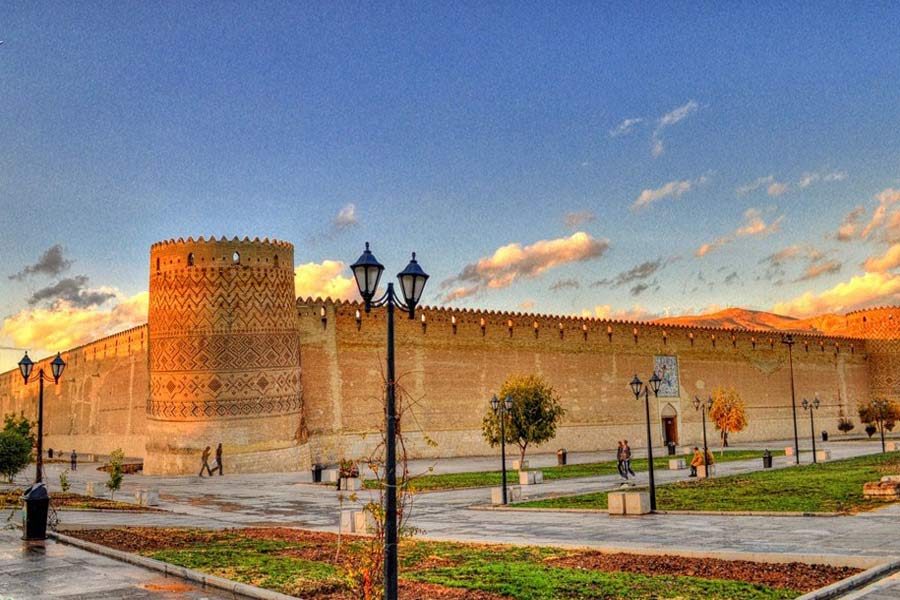
Shah Cheragh Shrine
This third holiest shrine of Iran is the funerary monument hosting the brother of Imam Reza in Mashhad city, one of the 12 Shiite Imams. The tombs with their remarkable onion-shaped domes were pilgrimage centers in the 14th century. This place is one of the most significant places of pilgrimage inside the city of Shiraz. Its new architecture follows the architecture of shrines with a big yard and has a picturesque, breathtaking design. Entrance to this holy and impressive shrine is free. Inside the building is decorated with numerous mirror works that make you really dazzle. Shah Cheragh shrine is one of the most elegant and charming ones even in Iran. At night the sparking lights make an amazing spectacle in this eye-catching manmade attraction site. Shah cheragh shrine is beautiful at any time of the day but especially at dawn and night time when you can admire the beauty of the reflected colors and lights of the tiles. You will not be able to grasp the splendor of this architectural work of art if I explain just in words; so please when you travel to Shiraz, Iran, do pay a visit to this gorgeous religious site
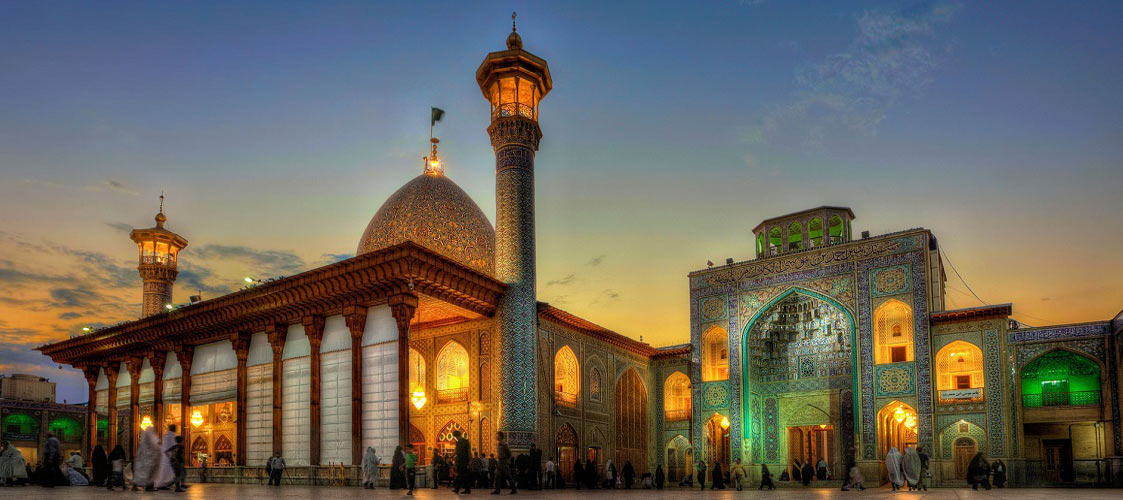
Pink Lake or Maharloo Lake
Maharloo Lake is another salt lake and once home to migrant birds who have, sadly, diminished as drought has dried this lake up. Much like Lake Urmia though, rainfall helps to restore water levels. Rich in potassium and other salts, the lake turns pink due to a high percentage of pink-colored algae. Those flying into Shiraz can witness spectacular views from above when the lake is full, and those on the ground can enjoy both the lake and the beautiful surrounding scenery
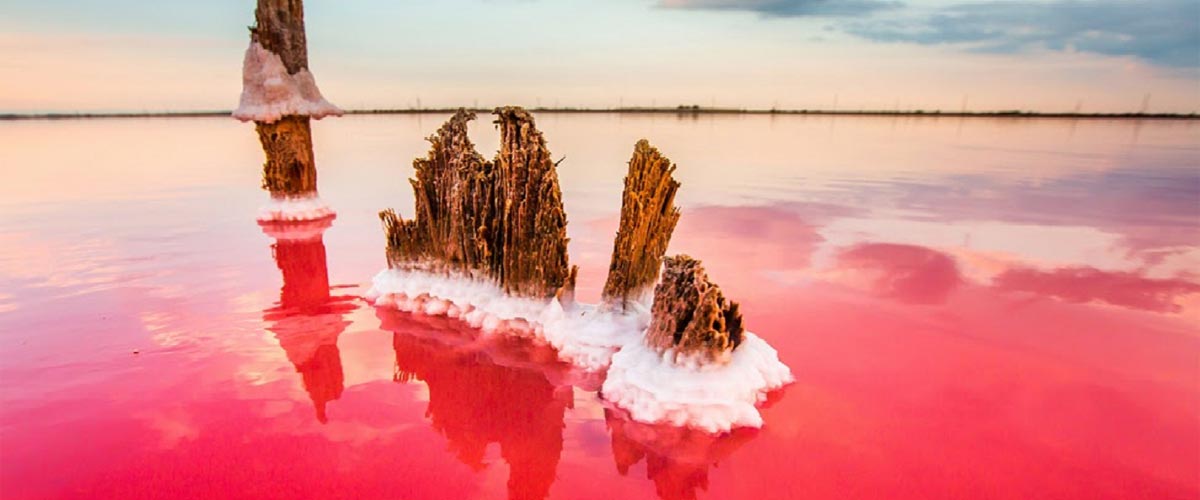
Ghalat Touristic Village
Perfectly hidden between willow and plane trees, cool weather and cozy atmosphere, and being away from the bustle of the city, Ghalat Village is a beautiful oasis to see. If you are interested in rural tourism or hiking a mountain, this is an exceptional choice for you. Ghalat Village is located almost 36 Km from the northwestern side of Shiraz. The city of flowers and poems is already filled and surrounded by gardens and greeneries and Ghalat Village is definitely one of the best of them. Ghalat is an old form of the word village and it means somewhere that has steamed springs and good weather. This village is perfect for those who are tired of traffic jams and sound pollution; you can find absolute peacefulness in this place. You just have to listen to the sound of water that is slowly pure from waterfalls and birds singing or enjoy watching the beautiful and green bushes and trees. The villagers live in houses made of brick, clay, and stone, but like many other old areas, modernization touches the purity of Ghalat Village, and there are some buildings such as restaurants and cafes which are built in a modern way, and they might not be in harmony with old patterns. There are three waterfalls in Ghalat Village that are worth visiting. Two of them have easy access, but you might find difficulty reaching the third. Also, you can see two rivers that pass through the village and beside the banks of them you can find local flowers and medicinal herbs, such as thyme and oregano. Don’t forget to take a deep, deep breath to inhale some fresh air into your lungs while you are listening to the sound of water and smelling these aromatic plants. Hiking mountain is another favorite activity that you can consider doing when you are in this picturesque village. You are already 2065 meters above the sea level, imagine how it would feel if you climb higher. Bear the challenging climbing to the mountain, and as a reward, you will see a perfect view of Ghalat Village from the peak. Apart from the spectacular nature of Ghalat Village, you can also find some historical monuments. An Old Church, watermill, and castle are some of these ancient sites, but unfortunately, you might only see some ruins of them. Not a fan of climbing and visiting old buildings? You can just walk through the alleys of this relaxing village and enjoy the company of local people. They are so kind and hospitable. Speaking of locals, people of Ghalat Village have their own unique culture and costume. People of this Village are mainly Qashqai, and they wear their beautiful and colorful clothes and dresses on special occasions. If you are lucky enough, you may as well visit a traditional wedding and see this traditional costumes.
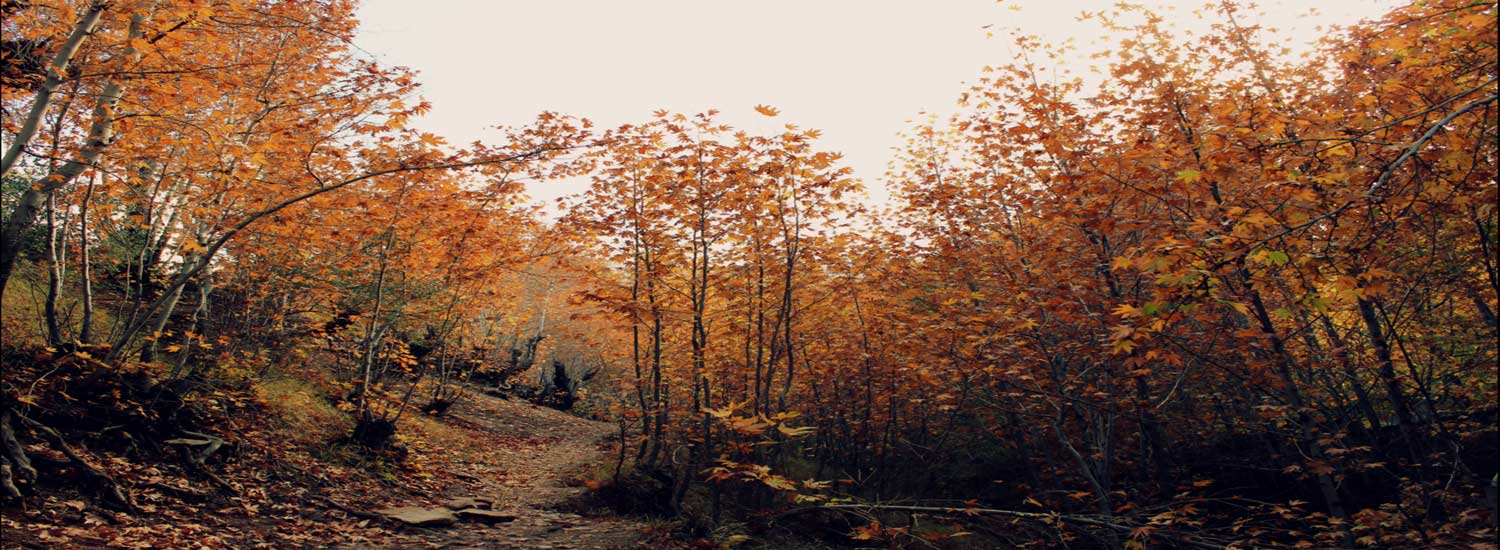
Margoon Waterfall
It seems that when God created the world, he copied some pieces of heaven directly to the Earth, Margoon Waterfall is one of these places! The incredible feeling of fresh water on your skin, the Heavenly sound of water dropping, and the breathtaking view of this waterfall makes you wonder as you step inside the heaven. Margoon Waterfall is secretly hidden inside the mountains of Sepidan region. With its spectacular fountains and rivers, this area is perfect for the nature lovers. On your way to the waterfall, you will see numerous colorful flowers, such as fritillaries, and incredible mountain sceneries, maybe you’ll forget about the waterfall and just enjoy the road itself! It is worth to mention that the best time to travel to Margoon Waterfall is during spring and summer, as in wintertime the road might be snowy and it is dangerous for you to reach the place. You can drive to the waterfall, but you have to park your car about 800 meters before the waterfall entrance because no vehicle can pass through further. Also, you have to do a little hiking to get to this lovely place. Finally, at the end of your hiking journey, lovely streams will touch your feet, the weather is getting a little cooler, and your ears will be filled with the sound of water pouring. Just go a little further, and now you can see it! It is time to close your eyes and take a deep, deep breath to feel the freshness and joy inside this place thoroughly. One of the exciting facts about Margoon Waterfall is that the water of this waterfall is not supplied by any river nor spring above the mountains. Actually, the water comes out from the stones holes! This beautiful lady who is wearing a dress of emerald moss is more than 70-meter high. Enjoy every second of its fantastic company and don’t forget to take as many pictures as you can because you might never feel anything like this again
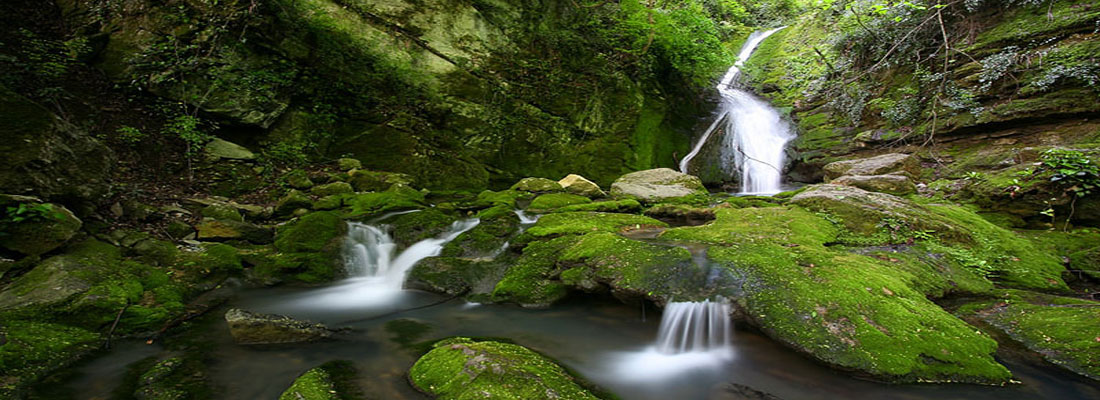
Lost Paradise
The Lost Paradise is the name of a green area with fine weather in Marvdasht and Kamfirouz County. The real name of the place was “Bostanak Canyon” which is now famous as the Lost Paradise. Bostanak Canyon or the Lost Paradise is a beautiful valley dragged in eastern-western sides and vertical tall rocks have surrounded it on both sides.This spectacular area with its beautiful dense trees and rivers full of water catches the eyes of any observer and makes the visitors admire and worship its Creator. It is one of the protected areas in Fars Province.Dense trees in the Lost Paradise are so much tangled and have created such an alluring roof over the visitors and tourists that seeing sunrise from among the leaves of the trees becomes so difficult
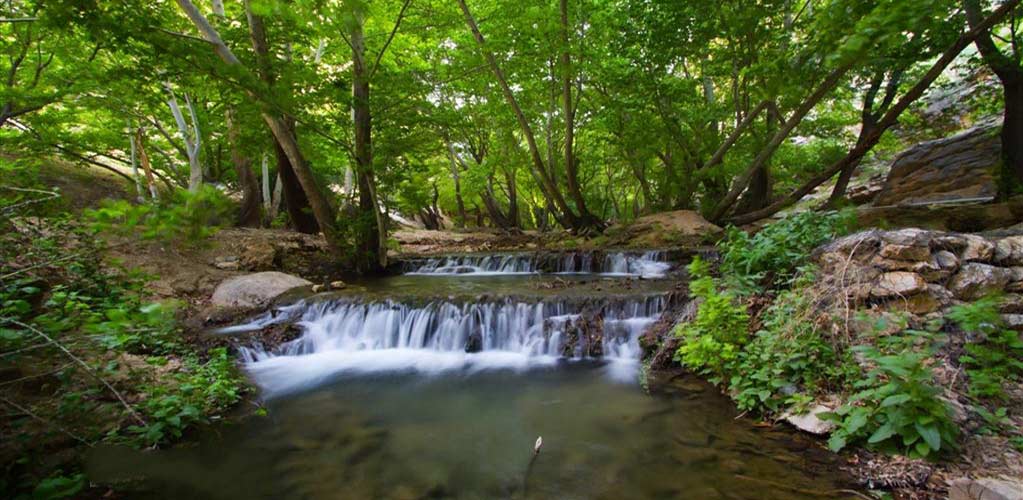
Qashaqai Nomads
They chose to live free; they didn’t condemn themselves to houses made of brick and stones. Instead, they have the company of nature; they dance with the wind, drink from rivers. Their bed is meadows and their ceiling sky. They know how to tame nature, they are Qashqai Nomads. With more than one million populations, Qashqai is one of the largest tribes in Iran. Modern lifestyle of the 21st century caused a considerable proportion of them became citizens and villagers, but still many of its people live as nomads. As you may know, Iran has a variety of ethnic groups. Qashqai Nomads are mainly Turkish, and they live in the southwest provinces of the country, especially Fars. As their name indicates, they are always on the move during warm and cold seasons. In summers, when the weather gets hot, and it is difficult to live in their black tents, they departed to more moderate areas, and they call it Yaylak or Yeilagh (a countryside that has cool weather). On the other hand, when the climate gets cold, and it is hard for them to find forage for their livestock, they move to warmer parts of the country called Kishlak (Gheshlagh in Persian). The process of this temporary emigration is fascinating, reminding this popular notion “nothing lasts forever.”
Qashqai Nomads have their very own cultural items. From different food to dialect. Qashqai nomads are happy and lively people. They use every opportunity to celebrate. You should consider yourself very lucky if you have a chance to see a Qashqai wedding. On this exceptional occasion, men and women wear traditional and colorful clothes that catch any eye. Then they make a large circle, grab a colorful handkerchief, and start Qashqai dance, of course, with Qashqai local music. Due to their long exposers to the sun, they usually have freckled skins, women and girls do not use any cosmetics, and you can differ a girl from a married woman by her hairstyle. Living in nature makes them fearless, energetic, and tough, but it doesn’t mean that they are not kind; actually, they have a golden heart. Qashqai nomads will welcome you to join them for lunch and dinner. They greet you with their organic and homemade foods, nothing like you’ve tasted before. Watching how they manage to adopt different methods to survive in the wild and how they live their daily life tasks surely is an unforgettable and fantastic experience for you. You can see our Nomads Tour and familiar with this amazing tour.
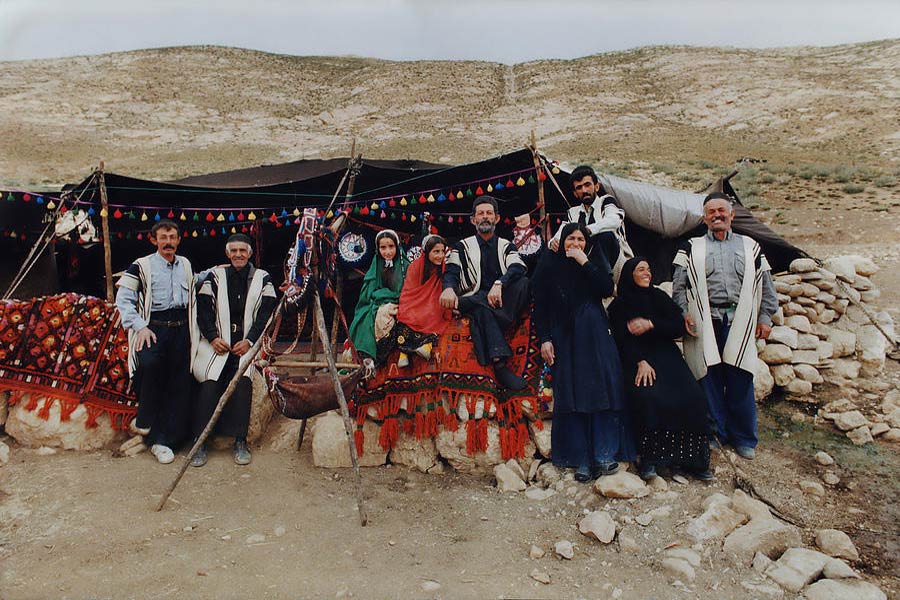
Pooladkaf Ski Resort
Pooladkaf is a SKI RESORT in the South of Iran, 90 km from Shiraz, and 15 Km from Sepidan city. Elevation of this ski resort is from 2810 to 3231 meters from sea level. There is a gondola lift with a length of 2100 m and also surface lifts. Pooladkaf has a hotel, a restaurant with traditional foods and fast foods and also one coffee shop at the top station of the gondola. In Pooladkaf resort you can enjoy driving snowmobiles and ATVs, and also riding Segways, bikes, horses and pedalo boats. All facilities of this ski resort are open to the public in non-ski seasons too. The ski season in Pooladkaf usually starts from first of December to late March and sometimes this period extends to April. Due to considerable precipitation of this region (about 1000 mm in less than 6 months), in some years there are 3 meters of snow at the bottom of the resort. Finally, the interesting point about this resort is strong sunshine even in January
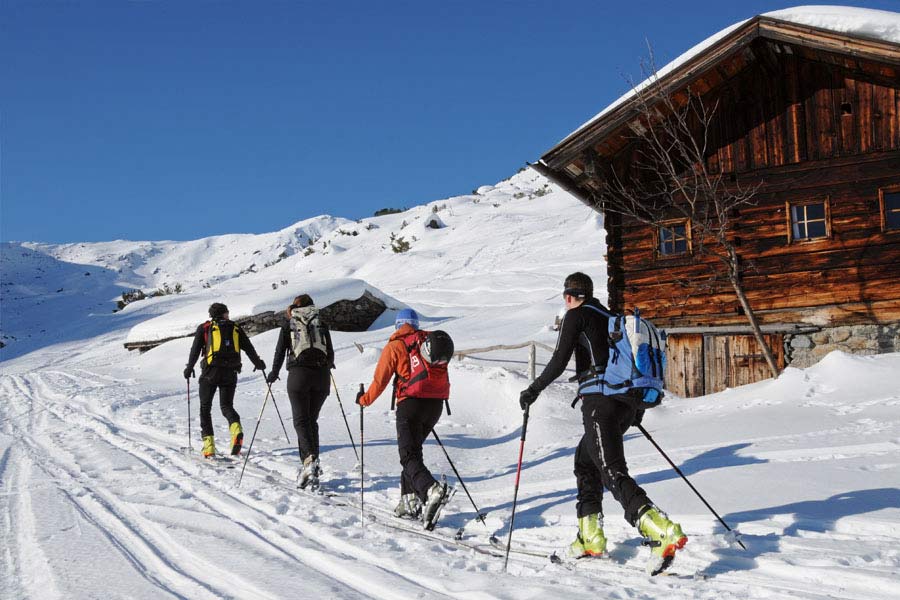
If you are planning to choose Shiraz city tours or Shiraz day tour, you are in the right place. We offer exclusive Shiraz tour packages. Our main purpose is to expose you to Iran’s rich history and let you experience Iranian culture.
Join us and book your own Shiraz city tour or Shiraz day tour.